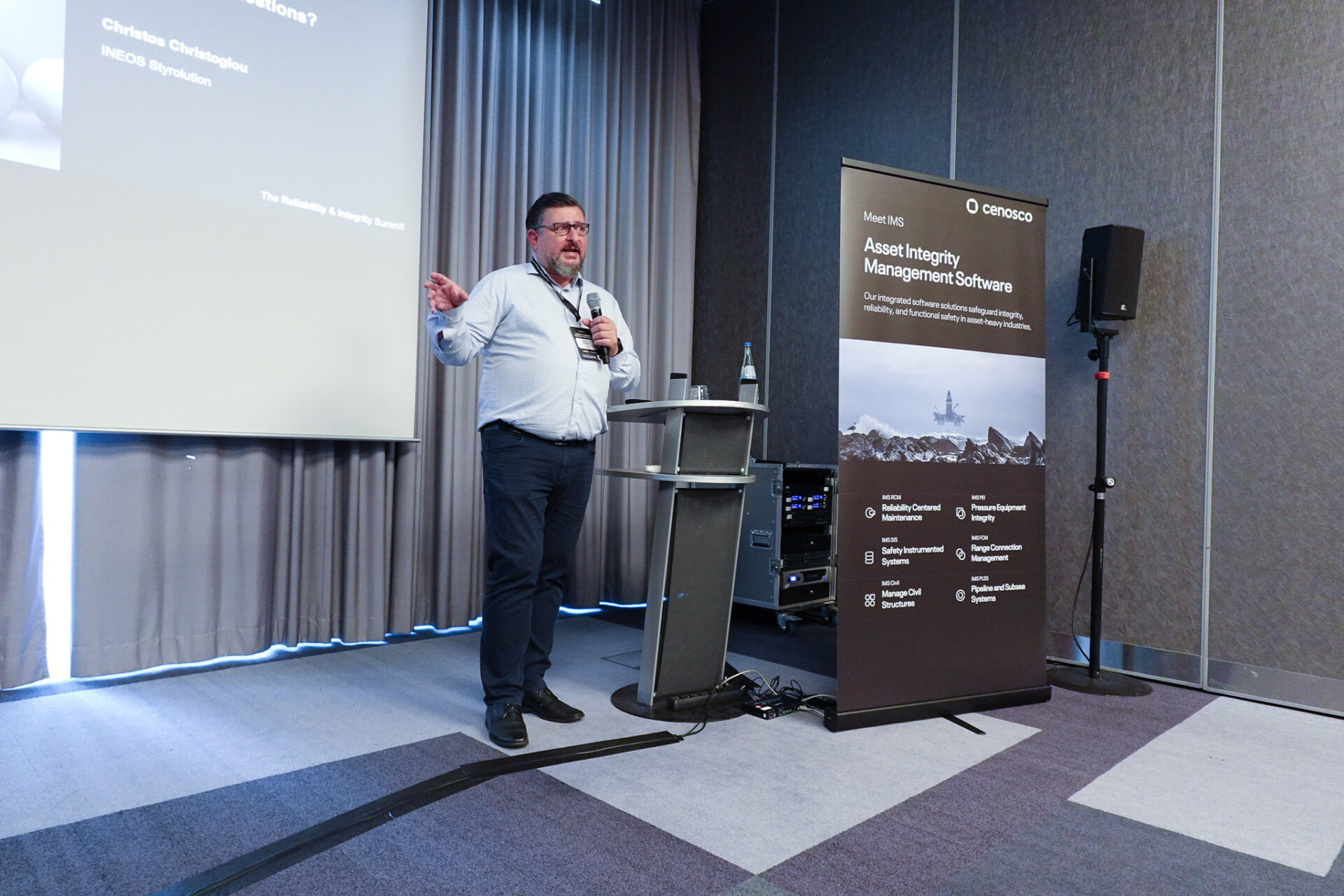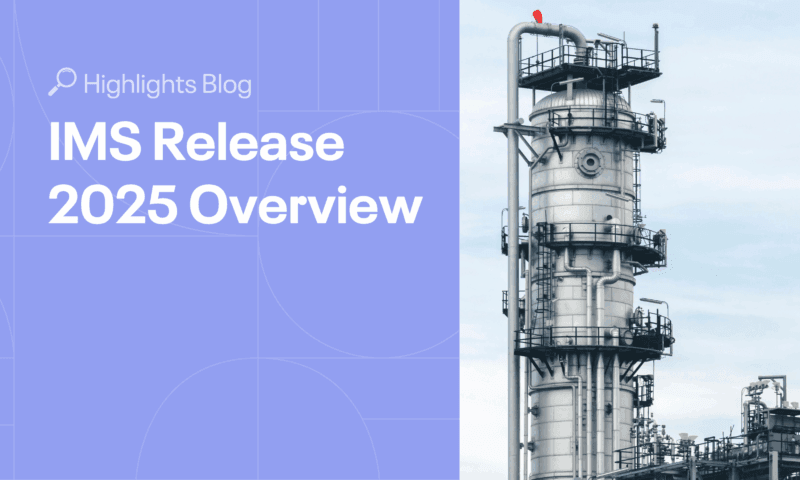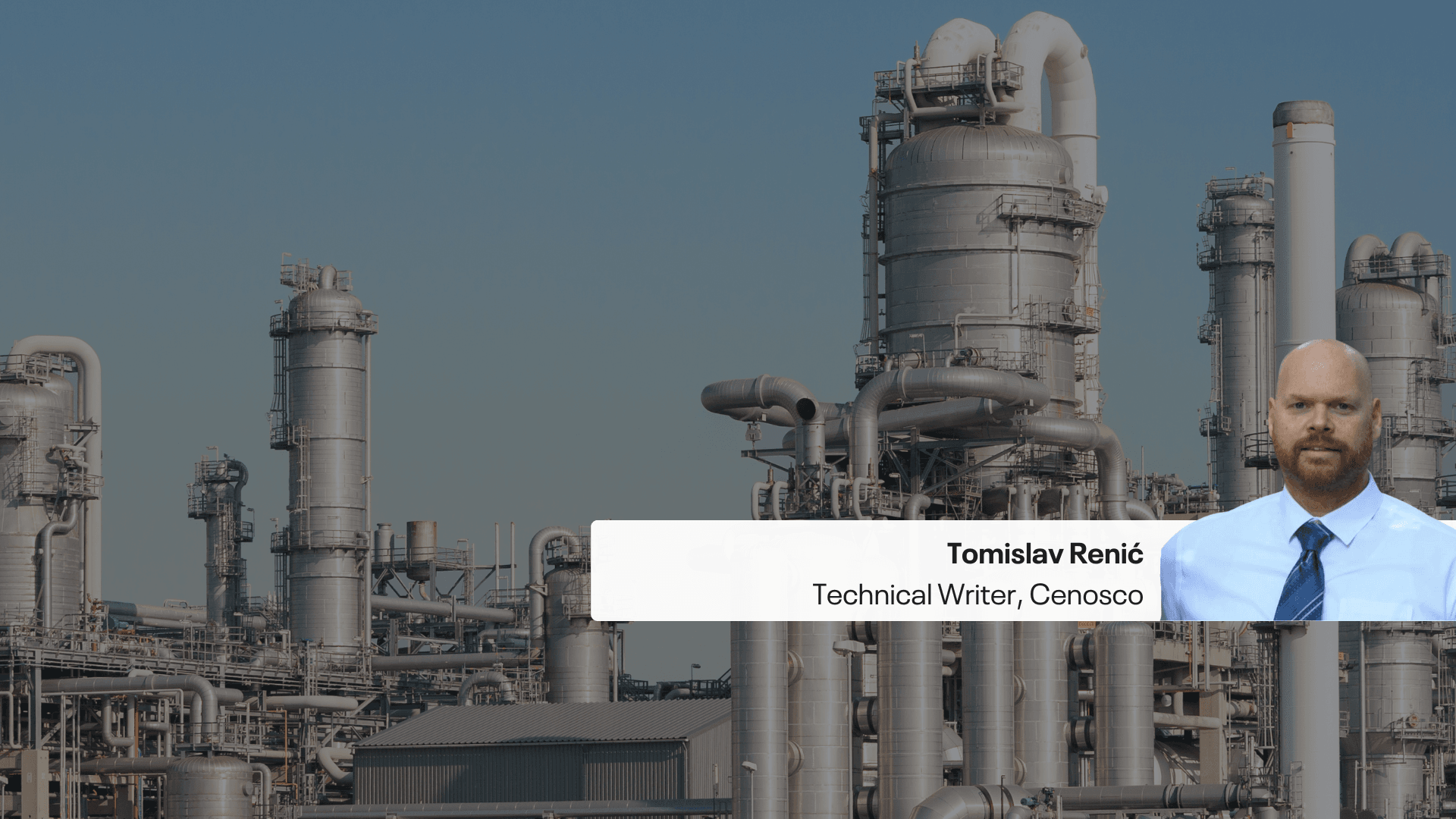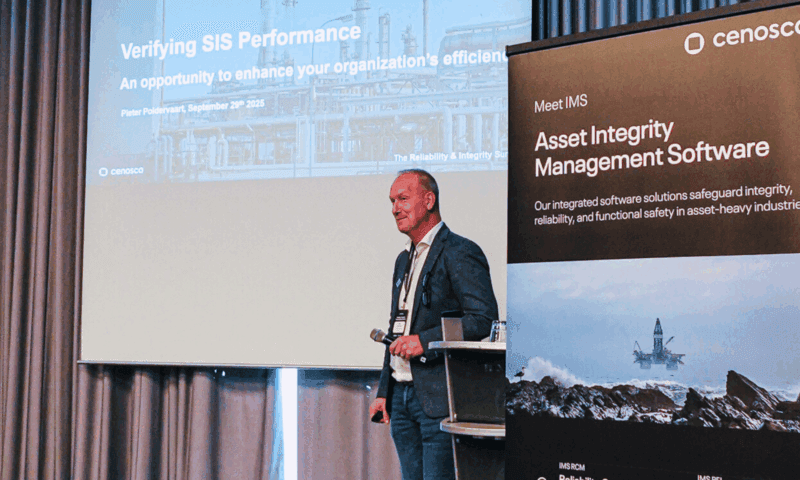Ageing assets are a growing challenge in industrial operations because of time and wear, as well as how organisations think about risk, reliability, and investment. At Cenosco’s recent Reliability, Integrity, and Functional Safety Summit in Cologne, INEOS’ Christos Christoglou emphasised that a risk-based mindset is essential to ensure long-term safety and performance coupled with profitability. Age, he explained, is merely one factor. How an asset ages and how it’s managed makes all the difference.
How Assets Really Degrade
Christos began with a simple but powerful message: ageing equipment doesn’t fail just because it’s old; it fails because it isn’t cared for properly. For example, continuous care for ageing assets has been done with varying degrees of diligence and success. While design life and material fatigue matter, environmental conditions, corrosion, and maintenance discipline are often far more decisive.
Corrosion, especially corrosion under insulation (CUI), remains one of the industry’s biggest hidden threats. It’s silent, progressive, and often invisible until late. Christos explained that the key lies in systematically identifying where degradation mechanisms might occur, how they evolve, and what actions can prevent them. This means moving away from fixed-interval inspections toward a continuous understanding of asset health.
Instead of waiting for failures to happen, he urged companies to understand why assets degrade and to act before risk turns into loss. “We earn money only when we can produce safely and deliver on time,” he reminded the audience – a simple truth that often gets lost in day-to-day operations.
Building a Smarter Inspection Culture
One of Christos’ central messages was the need to go beyond compliance. Legal inspections may tick the boxes, but they rarely prevent unplanned downtime. A risk-based approach shifts the focus from “what must we do” to “what should we do to stay reliable.”
This mindset starts with defining a clear strategy: What is the goal for each asset? Do we want to maximise uptime, reduce maintenance costs, or extend lifecycle? Once the objectives are clear, the methodology follows through with risk-based inspection (RBI), condition monitoring, and predictive maintenance.
These approaches help prioritise efforts based on the likelihood and consequence of failure. Rather than inspecting everything equally, teams focus on what truly drives risk. This shift saves time, reduces costs, and, most importantly, strengthens asset availability.
The Human Factor and Why Expertise and Communication Matter
Technology and data are vital, but Christos stressed that people remain at the heart of reliability. A strong risk-based program relies on experienced engineers and inspectors who can interpret data, ask the right questions, and translate field experience into insight.
He shared a striking example of a costly failure that occurred simply because two experts in the same room didn’t ask each other the right questions. The information existed; it just wasn’t communicated properly. This story illustrated a fundamental truth: even the best tools are useless if teams don’t talk, collaborate, and understand one another’s perspectives.
Therefore, developing a risk-based mindset means developing people. Training, mentoring, and a culture of curiosity are just as critical as software or sensors. Engineers must know what to look for, why it matters, and who needs to know about it.
Technology as an Enabler of Smarter Decisions
Christos also reflected on how technology can amplify, not replace, human expertise. Digital inspection systems, predictive analytics, and AI-driven tools offer enormous potential to streamline maintenance and uncover hidden risks. But their success depends on integration and adaptability.
Too often, he noted, organisations operate in silos, with maintenance, inspection, and operations, each with its own data and priorities. The goal should be a connected ecosystem where data and information flow seamlessly between systems, enabling real-time decision-making.
He encouraged the audience to continually update their inspection and maintenance strategies as new tools and materials become available. Whether adopting new monitoring technologies or redesigning components to reduce erosion or corrosion, adaptability keeps reliability strategies relevant and effective.
Culture: The Hardest but Most Important Shift
While technology and methodology can be implemented relatively quickly, culture takes time and is often the hardest piece to change. Christos explained that a true risk-based mindset cannot exist without cultural transformation. Tools and frameworks may guide the process, but people make it real.
Some plants fully embrace risk-based principles within the same organisation, operating proactively, planning, and continuously learning from minor deviations. Others, however, remain stuck in what Christos called “firefighting mode,” constantly reacting to problems instead of preventing them. What separates the two is rarely funding or access to technology. It’s mindset.
A risk-based culture begins with trust and transparency. It requires leaders who don’t just talk about safety and reliability but live those values daily. Teams need to feel safe speaking up when something isn’t right, sharing early warnings, uncertainties, or potential failures without fear of blame. In too many organisations, issues are hidden or downplayed because people worry about repercussions. Over time, silence becomes the most significant risk.
Christos challenged leaders to foster an environment where curiosity replaces fear and learning replaces punishment. Every incident, near miss, or small failure is an opportunity to understand, improve, and grow stronger as an organisation. “If we want our assets to age well,” he suggested, “our culture needs to mature with them.”
Shifting from “we’ve always done it this way” to “how can we do it better?” might be uncomfortable initially, but it’s the only path toward sustainable success. As Christos made clear, culture is the foundation on which every risk-based decision stands. Without it, even the most advanced technology or process will eventually fail. With it, organisations can turn every challenge into an opportunity for growth.
The Path Forward
Christos closed with a realistic yet hopeful message: adopting a risk-based mindset is not a quick win; it’s a long-term commitment that requires patience, investment, and genuine collaboration across every level of an organisation. But the effort pays off many times over.
When human expertise, modern technology, and a culture of continuous learning come together, organisations move beyond simply maintaining their assets. They begin to understand them. They can anticipate failures before they occur, make smarter decisions under pressure, and turn operational uncertainty into confidence.
Christos noted that a risk-based mindset isn’t about eliminating risk entirely. It’s about recognising that risk will always exist and learning to manage it intelligently. It’s the ability to act with foresight instead of hindsight. In doing so, companies transform ageing assets from potential liabilities into enduring sources of strength, reliability, and value.
准备好演示了吗?
您准备好观看 IMS 套件的实际操作了吗?请填写下表预约演示!




